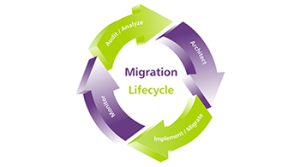10 reasons why you must upgrade your legacy applications today
Upgrading a legacy software may seem like a daunting task at first to any company. This is because the company has been using it successfully for years and also because all of the spending is made on its functioning & maintenance. However, if the software or applications aren’t upgraded, then the overall efficiency and even the profitability of the company may suffer.
Here are 10 signs your legacy application needs to evolve:
1. Your legacy application/software is slowing down you down
A slow legacy application or software can slow down all your different business processes. As the skills and requirements of your workforce increase, it is important to match their growth. If your staff is working on an outdated software, you will not be able to get the best out of them.
Issues like multiple glitches or constant crashing can also take slow down your product journey
2. Your business process is revolutionising
Business models change regularly in today’s date. The fact that your legacy application was created many years ago makes it imperative for you to upgrade it regularly to avoid any mismatch.
3. Second-rate user experience
Sometimes, just speed isn’t enough. If your legacy application/software (both old & new) is extremely undesirable regarding usability, then your staff will have a hard time working on it.
4. Bad Mobility
Today’s businesses are rapidly moving towards mobility & accessibility. But still, many legacy applications are device-dependent. They are not accessible by mobile & smart devices.

This is one of the main reasons why cloud-based applications outperform in-house systems.
5. Not compatible with new systems & tools
Old systems require an excessive amount of custom-code to run new tools. In many cases, they completely fail in establishing any compatibility. Adding new apps or tools that help in making your production system more efficient or a CRM to manage your customers is important and can be achieved by upgrading your legacy software.
6. Hardware Dependency
Unless you upgrade your legacy application and take it to the cloud, you will need in-house hardware to support it. Not only does this take up a lot of space but it also involves the unavoidable maintenance charges. Cloud storage services can help your business by reducing your IT infrastructure costs by over 50%!
7. You legacy software is not scalable
As your business grows, you will need to expand your production capabilities. But your legacy application may not allow that because it works within its limitations.
8. Your vendor has discontinued the legacy application
Businesses that run on third party software, also depend on its suppliers for maintenance & updates. The problem arises when the vendor terminates the software due to technical or legal issues. In this case, you have no option but to explore other options.
9. Training your staff becomes expensive
Many legacy apps lack clarity & involve many outdated processes. Mastering legacy software & application can take a lot of time. Hence, hiring & training your new employees to make up for old deficiencies can be challenging.
10. Security-threat
Old IT assets are often overlooked and can turn out to be a major source of cyber-security issues. They’re termed as EOL or End-of-life assets. As long as you don’t identify & neutralise the potential threat from these assets, there will always be a chance of security breach .These are the tell-tale signs that your legacy application needs to be upgraded, hence, always keep an eye out for them.



